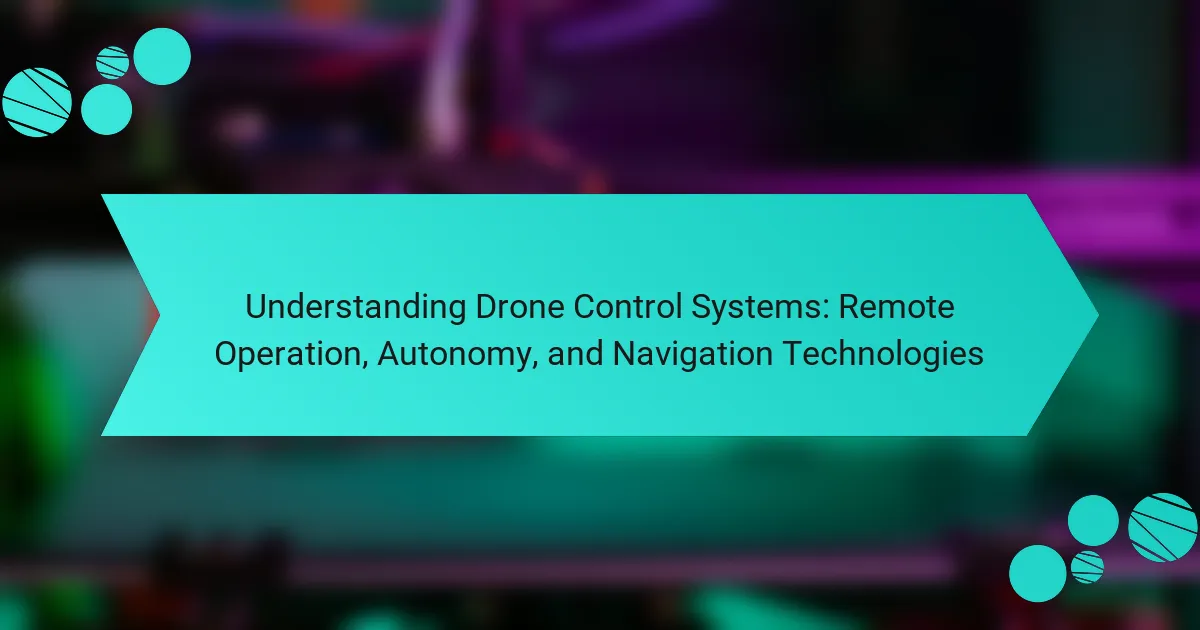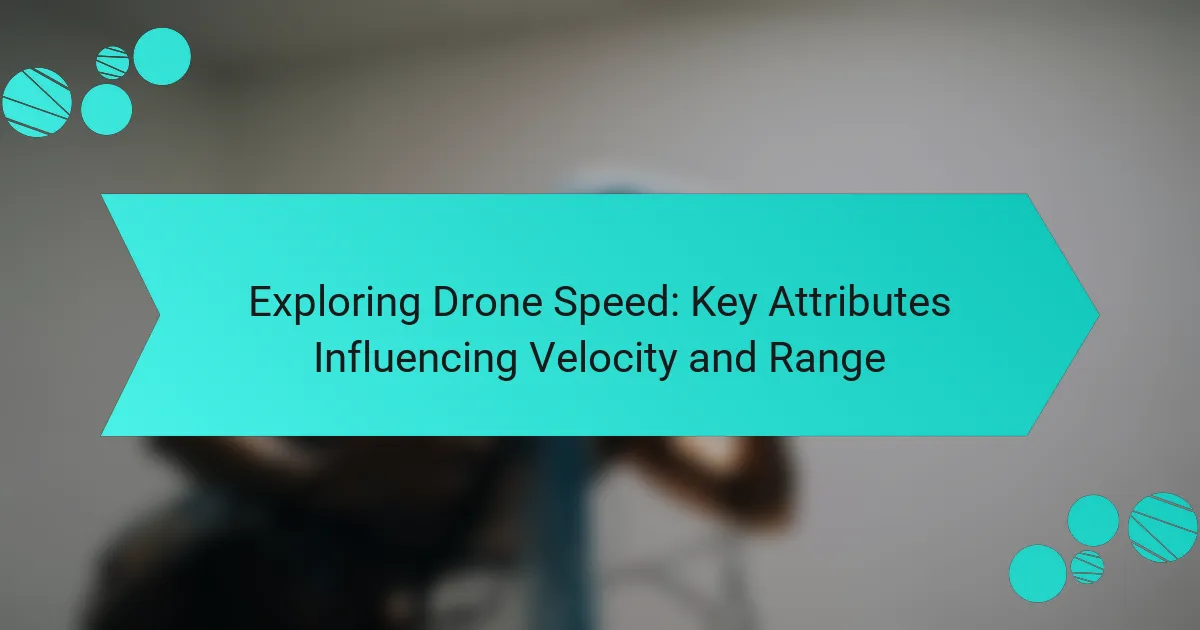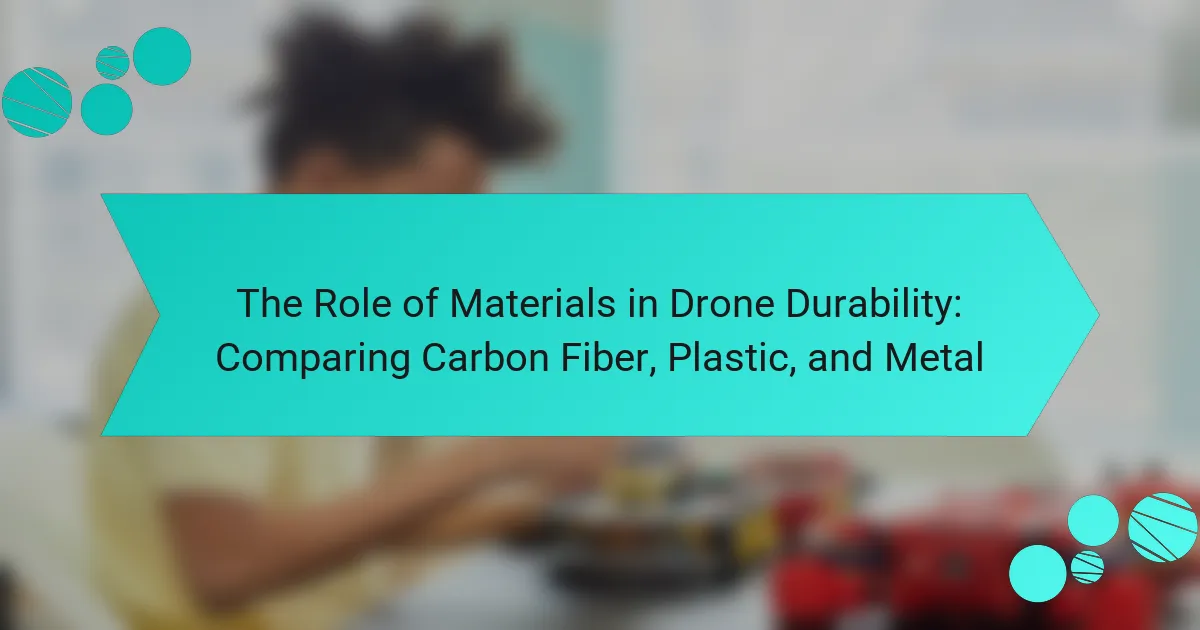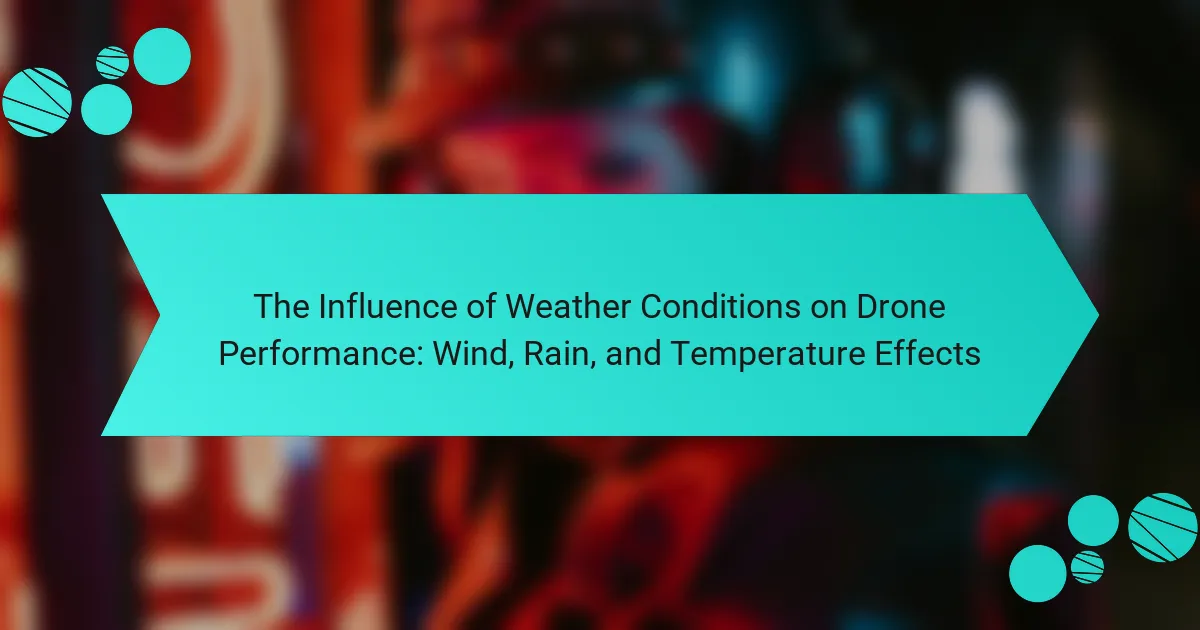
What is Drone Camera Quality?
Drone camera quality refers to the overall performance and capabilities of a camera mounted on a drone. It encompasses several factors such as resolution, image stabilization, and lens types. High resolution allows for clearer and more detailed images, often measured in megapixels. Image stabilization reduces blurriness caused by drone movement, enhancing photo and video quality. Lens types can affect the field of view and depth of field in captured images. For instance, wide-angle lenses capture more of the scene, while telephoto lenses allow for closer shots from a distance. Together, these attributes determine the effectiveness of a drone camera in various applications, from aerial photography to surveying.
How is Drone Camera Quality evaluated?
Drone camera quality is evaluated through several key factors. These factors include resolution, stabilization, and lens types. Resolution determines the clarity and detail of the images captured. Higher resolution cameras produce sharper images with more detail. Stabilization is crucial for reducing blurriness caused by drone movement. Effective stabilization systems ensure smooth video footage. Lens types affect the field of view and depth of field. Different lenses can create various visual effects. Evaluating these attributes provides a comprehensive understanding of drone camera quality.
What are the key metrics for assessing Drone Camera Quality?
Key metrics for assessing drone camera quality include resolution, sensor size, lens type, dynamic range, and stabilization. Resolution refers to the number of pixels captured, impacting image detail. Higher resolution allows for clearer images, especially in larger prints or crops. Sensor size affects light sensitivity and image quality in low-light conditions. Larger sensors generally produce better images. Lens type influences the field of view and distortion levels. Different lenses serve various shooting needs. Dynamic range measures the camera’s ability to capture details in highlights and shadows. A wider dynamic range results in more detail in challenging lighting. Stabilization technology reduces motion blur, enhancing video quality. Effective stabilization is crucial for smooth footage, particularly during flight.
Why is Drone Camera Quality important for aerial photography?
Drone camera quality is crucial for aerial photography because it directly impacts image clarity and detail. High resolution allows for capturing fine details in landscapes and subjects. Good stabilization minimizes motion blur, resulting in sharper images during flight. Lens quality affects color accuracy and depth of field. A camera with superior quality can produce professional-grade photos. Research shows that drones with 12 MP cameras or higher yield significantly better results. Enhanced camera features lead to more versatile shooting conditions and creative possibilities. Overall, better drone camera quality enhances the visual storytelling of aerial photography.
What are the main components that affect Drone Camera Quality?
The main components that affect drone camera quality are resolution, stabilization, and lens types. Resolution determines the clarity and detail of images captured. Higher resolution cameras can produce sharper images. Stabilization reduces blurriness caused by drone movement. Effective stabilization systems, such as gimbals, enhance video smoothness. Lens types influence the field of view and depth of field. Wide-angle lenses capture more area, while telephoto lenses focus on distant subjects. Each of these components plays a crucial role in overall image quality.
How does resolution impact Drone Camera Quality?
Resolution significantly impacts drone camera quality by determining the level of detail captured in images and videos. Higher resolution allows for sharper, clearer images with more detail. This is especially important for applications like aerial photography and surveying. For example, a 4K resolution captures four times the pixels of 1080p. This increased pixel count enhances image clarity and allows for larger prints without losing quality. Additionally, higher resolution improves the ability to crop images while retaining detail. In contrast, lower resolution can lead to pixelation and a loss of detail in images. Therefore, resolution is a critical factor in evaluating the overall quality of drone cameras.
What role does stabilization play in Drone Camera Quality?
Stabilization is crucial for enhancing drone camera quality. It reduces motion blur and vibrations during flight. This leads to clearer and sharper images or video footage. Stabilization systems, such as gimbals, compensate for drone movement. They allow for smooth panning and tilting, improving overall visual stability. Research indicates that stabilized footage is more visually appealing and professional. Studies show that viewers prefer stabilized video over shaky alternatives. This preference impacts the perceived quality of the drone’s camera output.
How do lens types influence Drone Camera Quality?
Lens types significantly influence drone camera quality by affecting image clarity, distortion, and field of view. Different lens types, such as wide-angle, telephoto, and standard lenses, provide varying perspectives and detail levels. Wide-angle lenses capture more of the scene but may introduce distortion at the edges. Telephoto lenses offer greater detail at a distance but have a narrower field of view. Standard lenses balance these characteristics, providing a natural perspective. The choice of lens impacts the final image quality, including sharpness and color accuracy. Research shows that lens quality directly correlates with the overall performance of drone cameras in capturing high-resolution images.
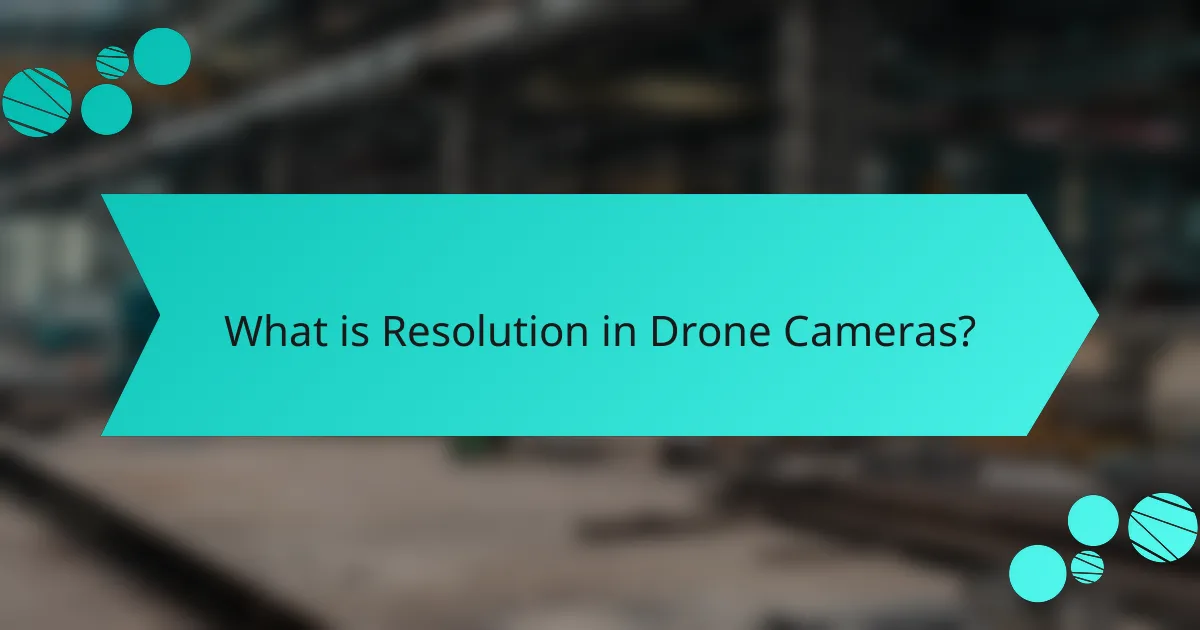
What is Resolution in Drone Cameras?
Resolution in drone cameras refers to the amount of detail an image can capture. It is typically measured in pixels, with higher pixel counts indicating better detail. Common resolutions for drone cameras include 1080p (Full HD), 4K, and even 6K or 8K in advanced models. Higher resolution allows for clearer images and more flexibility in post-processing. For instance, a 4K resolution offers four times the detail of 1080p. This increased clarity is crucial for applications such as aerial photography and mapping. Ultimately, resolution impacts the overall quality of the footage captured by the drone.
Why is resolution a critical factor in Drone Camera Quality?
Resolution is a critical factor in drone camera quality because it directly affects image clarity and detail. Higher resolution allows for capturing more pixels, resulting in sharper images. This is essential for applications like aerial photography and surveying, where detail is crucial. For example, a 4K resolution provides four times the detail of 1080p. This increased detail enables better post-processing and zooming capabilities without losing quality. Additionally, resolution impacts the ability to identify objects from a distance. In summary, higher resolution enhances the overall effectiveness and usability of drone imagery.
What are the different resolution standards used in drone cameras?
The different resolution standards used in drone cameras include 720p, 1080p, 4K, and 6K. 720p offers a resolution of 1280 x 720 pixels. 1080p, also known as Full HD, provides 1920 x 1080 pixels. 4K resolution is 3840 x 2160 pixels, delivering four times the detail of 1080p. 6K resolution, at 6144 x 3160 pixels, offers even higher detail, suitable for professional use. These standards determine the clarity and detail of the captured images and videos. Higher resolutions provide more detail, making them ideal for professional photography and videography.
How does resolution affect image clarity and detail?
Resolution directly impacts image clarity and detail. Higher resolution provides more pixels, which enhances the ability to capture fine details. For instance, a 4K image has approximately 8.3 million pixels, while a 1080p image has about 2.1 million pixels. This difference allows 4K images to display sharper lines and more intricate textures. Consequently, images taken at higher resolutions appear clearer and more defined, especially when viewed on larger screens. Studies show that viewers can distinguish details better in high-resolution images compared to lower resolutions. Therefore, increased resolution is essential for achieving optimal image clarity and detail.
How does resolution vary across different drone models?
Resolution varies significantly across different drone models. High-end drones often feature 4K resolution or higher. Mid-range models typically offer 1080p resolution. Entry-level drones may have resolutions as low as 720p. The camera sensor size and technology also impact resolution. Larger sensors can capture more detail at higher resolutions. For example, the DJI Mavic 2 Pro has a 20 MP sensor, enabling 4K video. In contrast, basic models like the Ryze Tello have a 5 MP camera, limiting resolution. Overall, drone resolution is determined by the model’s specifications and intended use.
What are the typical resolutions found in consumer drones?
Typical resolutions found in consumer drones range from 720p to 4K. Many entry-level drones offer 720p or 1080p resolution. Mid-range models often provide 2.7K resolution. High-end consumer drones usually feature 4K resolution. Some advanced models can shoot in 4K at 60 frames per second. This variety allows users to choose based on their needs. Higher resolutions deliver better image quality and detail. The demand for high-resolution video has increased in recent years.
How do professional drones compare in terms of resolution?
Professional drones typically feature high-resolution cameras, often ranging from 12 MP to over 100 MP. This resolution allows for detailed imagery suitable for various applications, including aerial photography and surveying. For instance, drones like the DJI Mavic 3 have a 20 MP camera, while the Phase One iXU 1000 offers a 100 MP option. Higher resolution enables clearer images and better post-processing capabilities. Additionally, resolution impacts the ability to capture fine details, which is crucial for tasks like mapping and inspection. As a result, professional drones are designed with advanced sensors to maximize image quality.
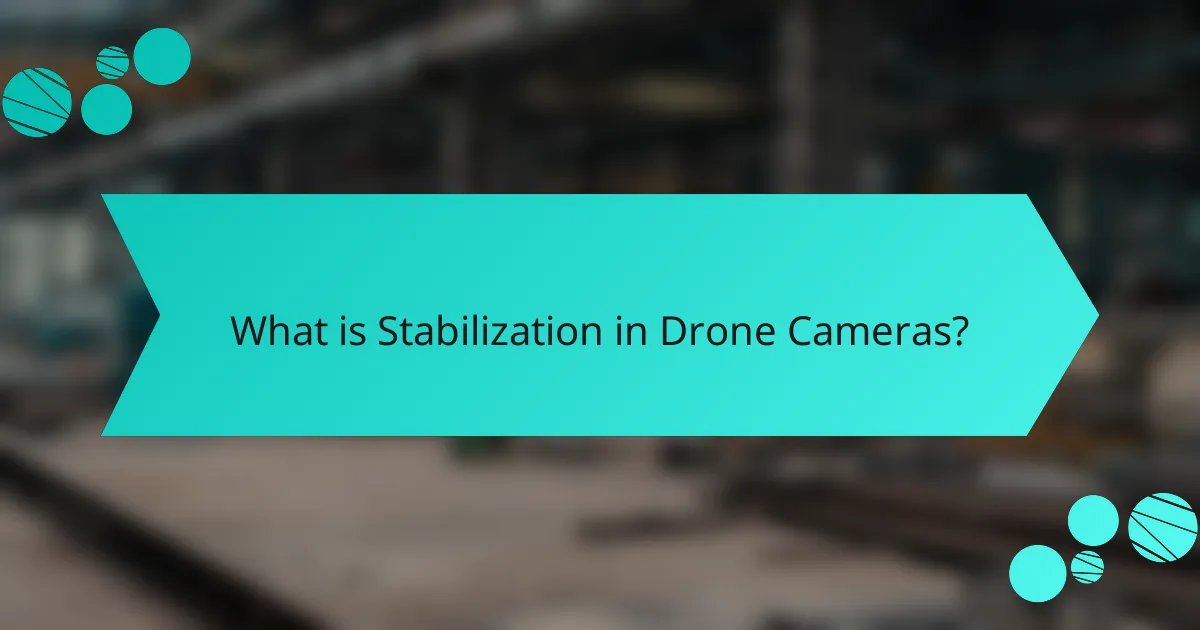
What is Stabilization in Drone Cameras?
Stabilization in drone cameras refers to the technology that reduces unwanted movement and vibrations during flight. This technology ensures smooth and steady footage, which is crucial for high-quality video production. Stabilization can be achieved through various methods, including gimbals and electronic stabilization systems. Gimbals mechanically counteract drone movements, while electronic systems use software algorithms to stabilize the image. The effectiveness of stabilization is measured by its ability to minimize shake and jitter in captured footage. High-quality stabilization is essential for professional videography and aerial photography. It enhances the overall viewing experience by providing clear and stable images.
Why is stabilization essential for high-quality drone footage?
Stabilization is essential for high-quality drone footage because it eliminates unwanted camera shake. Unstable footage can result in distracting movements that detract from the viewing experience. High-quality footage requires smooth transitions and clear visuals. Stabilization technology, such as gimbals or electronic stabilization, helps achieve this. Research shows that stabilized footage is perceived as more professional and engaging. According to a study by the University of Southern California, viewers prefer stabilized video by a significant margin. This preference highlights the importance of stabilization in producing visually appealing content.
What are the common types of stabilization systems used in drones?
Common types of stabilization systems used in drones include gimbals, electronic stabilization, and GPS stabilization. Gimbals are mechanical devices that use motors to stabilize the camera. They provide smooth footage by counteracting drone movements. Electronic stabilization uses software to reduce camera shake in post-processing. This method relies on algorithms to analyze and correct footage. GPS stabilization utilizes satellite positioning to maintain a steady flight path. This system helps drones hold their position against wind and turbulence. Each type of stabilization system enhances video quality by minimizing unwanted motion.
How does stabilization technology differ between drone models?
Stabilization technology differs between drone models primarily in the methods and systems used to achieve stability. Some drones utilize 3-axis gimbals, which mechanically stabilize the camera by counteracting movements in all three axes. Other models may rely on electronic stabilization, which uses software algorithms to smooth out footage. Additionally, high-end drones often combine both mechanical and electronic stabilization for enhanced performance.
For instance, DJI’s Mavic series employs a 3-axis gimbal system, providing superior stabilization for aerial photography. In contrast, lower-end models may only use digital stabilization, which can result in less smooth video. The choice of stabilization technology affects the quality of captured footage, particularly in windy conditions or during rapid maneuvers. Therefore, understanding these differences is crucial for evaluating drone camera quality.
How does stabilization impact the overall quality of drone footage?
Stabilization significantly enhances the overall quality of drone footage. It reduces unwanted vibrations and movements during flight. This leads to smoother and more professional-looking video output. Stable footage captures clearer details and minimizes motion blur. Research indicates that stabilized footage is more visually appealing and easier to watch. A study by the Journal of Aerospace Engineering found that stabilization improves viewer engagement by up to 30%. High-quality stabilization systems, such as gimbals, are crucial for achieving optimal results. They allow drones to maintain a steady shot even in windy conditions. Overall, stabilization is essential for producing high-quality drone footage.
What are the effects of poor stabilization on video quality?
Poor stabilization negatively impacts video quality by introducing unwanted shakes and jitters. This instability can make the footage difficult to watch. Viewers may experience discomfort due to the erratic motion. Additionally, poor stabilization can obscure important details in the scene. It can also diminish the overall professionalism of the video. In some cases, it may lead to a loss of focus on the subject. Research shows that stabilized footage is perceived as more visually appealing. According to a study by the University of California, viewers rated stabilized videos significantly higher in quality than those without stabilization.
How can users optimize stabilization settings for better results?
Users can optimize stabilization settings by adjusting the gimbal sensitivity and tuning the stabilization mode. Setting the gimbal sensitivity to a medium level helps balance responsiveness and smoothness. Users should select the appropriate stabilization mode based on their shooting conditions. For fast-moving subjects, use a locked mode. For dynamic scenes, opt for follow mode. Additionally, users should ensure that firmware is updated, as updates often improve stabilization algorithms. Properly balancing the drone before flight also enhances stabilization performance. Testing different settings in various environments provides valuable insights into optimal configurations.
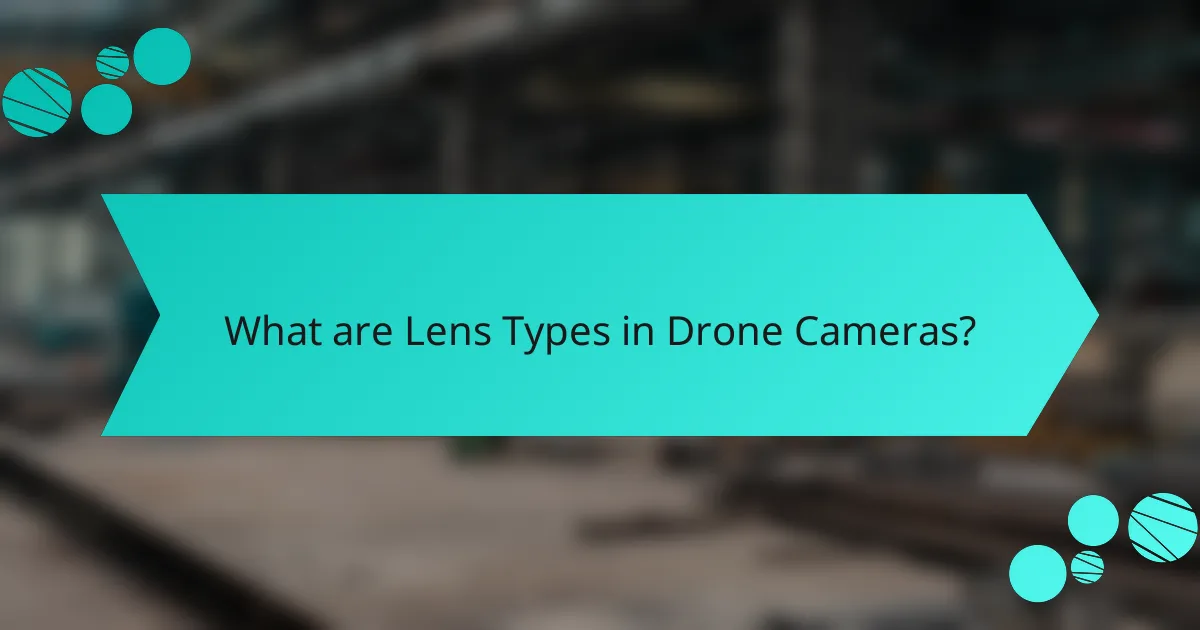
What are Lens Types in Drone Cameras?
Drone cameras utilize several lens types, each designed for specific imaging needs. Common lens types include wide-angle, telephoto, and fisheye lenses. Wide-angle lenses capture expansive views, making them ideal for landscape photography. Telephoto lenses offer magnification, allowing for detailed shots from a distance. Fisheye lenses create a distinctive circular image, providing a 180-degree field of view. These lens types enhance versatility in aerial photography and videography. The choice of lens impacts the overall quality and perspective of the captured images.
What are the various types of lenses used in drone cameras?
Drone cameras utilize several types of lenses. The most common types include wide-angle lenses, telephoto lenses, and fisheye lenses. Wide-angle lenses capture a broader field of view, making them ideal for landscape photography. Telephoto lenses allow for close-up shots from a distance, which is useful for wildlife photography. Fisheye lenses create a spherical, panoramic effect, providing a unique perspective. Each lens type enhances the versatility of drone cameras in various shooting scenarios.
How do wide-angle lenses affect field of view and image composition?
Wide-angle lenses significantly increase the field of view in photography. They allow for capturing more of the scene in a single frame. This is especially beneficial in landscape and architectural photography. The typical field of view for wide-angle lenses can range from 60 to 100 degrees. In contrast, standard lenses usually have a narrower field of view, around 40 to 50 degrees.
Wide-angle lenses also impact image composition by exaggerating the sense of depth. Objects in the foreground appear larger, while those in the background seem smaller. This effect can create a dynamic and engaging perspective. Additionally, wide-angle lenses can introduce distortion, particularly at the edges of the frame. This distortion can be creatively used or may require correction in post-processing.
Overall, wide-angle lenses enhance the ability to capture expansive scenes while influencing the visual storytelling of the image.
What advantages do telephoto lenses offer for aerial photography?
Telephoto lenses provide significant advantages for aerial photography. They allow photographers to capture distant subjects with clarity and detail. This is crucial when photographing landscapes or wildlife from a height. The compression effect of telephoto lenses enhances the visual impact of images. It brings distant elements closer together, creating a more cohesive composition. Additionally, telephoto lenses reduce the amount of background distraction. This results in sharper focus on the main subject. Their longer focal lengths enable better framing without disturbing the subject. Overall, telephoto lenses are essential tools for achieving high-quality aerial photographs.
How do lens quality and characteristics influence drone camera performance?
Lens quality and characteristics significantly influence drone camera performance. High-quality lenses provide better image clarity and sharpness. They reduce optical distortions and aberrations, resulting in clearer images. Lens materials, such as glass versus plastic, also play a role in light transmission. Better light transmission enhances low-light performance and color accuracy. The focal length of the lens affects the field of view and perspective. A wider lens allows for broader scenes, while a longer lens can capture distant subjects more effectively. Additionally, lens coatings can minimize glare and reflections, improving overall image quality. These attributes collectively determine how well a drone camera performs in various shooting conditions.
What factors should be considered when choosing a lens for drone photography?
When choosing a lens for drone photography, consider focal length, aperture, and lens type. Focal length affects the field of view and perspective. A wider focal length captures more of the scene. A longer focal length provides a zoomed-in effect. Aperture influences light intake and depth of field. A larger aperture allows for better low-light performance. Lens type matters for specific photography needs. Prime lenses offer better image quality, while zoom lenses provide versatility. Additionally, consider weight and size for flight stability. These factors impact overall image quality and shooting capabilities in various conditions.
How can lens filters enhance drone camera image quality?
Lens filters can enhance drone camera image quality by reducing glare and improving color saturation. They help manage reflections from surfaces like water and glass. This results in clearer images during bright conditions. Polarizing filters, for example, can enhance the contrast in skies and foliage. Neutral density filters allow for longer exposure times, which can create smoother motion in video. These filters also help prevent overexposure in bright environments. Studies have shown that using filters can significantly improve the overall aesthetic quality of aerial photography. By controlling light entry, they contribute to more professional-grade images.
What are the best practices for evaluating and selecting a drone camera?
The best practices for evaluating and selecting a drone camera include assessing resolution, stabilization, and lens types. High resolution is essential for capturing detailed images and videos. A minimum of 12 MP is recommended for quality photography. Stabilization systems, such as gimbals, reduce motion blur and enhance video quality. Look for drones with 3-axis gimbals for optimal stability. Lens types also matter; wide-angle lenses capture more of the scene. Check the field of view, ideally between 90 to 120 degrees. Battery life influences camera performance; longer flight times allow for more footage. Finally, consider user reviews and expert recommendations to validate your choice.
Drone camera quality is defined by its resolution, stabilization, and lens types, which collectively determine the performance and effectiveness of drones in capturing high-quality images and videos. Key metrics for evaluating drone camera quality include resolution, sensor size, dynamic range, and stabilization technology, all of which significantly impact image clarity and detail. The article explores how each of these attributes influences aerial photography, emphasizing the importance of high resolution, effective stabilization systems, and appropriate lens types for achieving optimal results in various applications. Additionally, it provides best practices for selecting a drone camera based on these critical factors.
